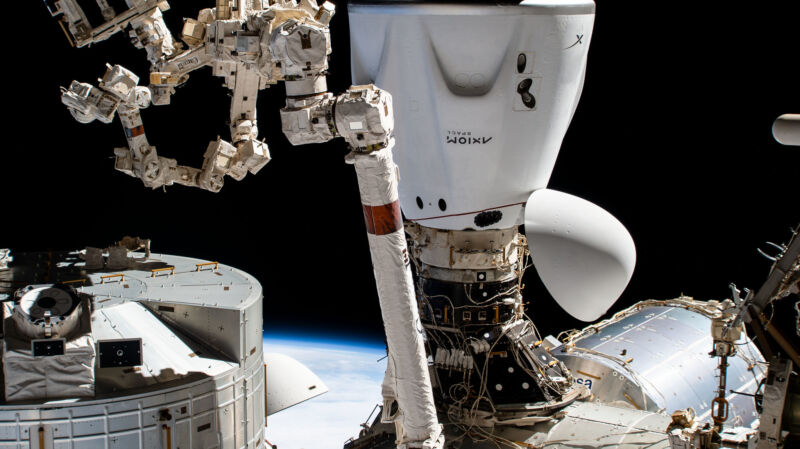The Crew Dragon spacecraft named Endeavour undocked from the International Space Station on Sunday evening, setting the stage to bring four private astronauts back to Earth.
After slowly backing away from the orbiting laboratory, Endeavour is now positioned to conduct a de-orbit burn on Monday, nudging it into Earth's atmosphere. After a brief, fiery trip through the atmosphere, the spacecraft will splash down off the coast of Jacksonville, Florida, at 1:06 pm ET (17:06 UTC).
Upon landing back on Earth, Ax-1 mission Commander Michael López-Alegría, Pilot Larry Connor, and Mission Specialists Eytan Stibbe and Mark Pathy will have spent 17 days in space following their launch on April 8. The crew was originally scheduled to spend eight days docked to the space station, but the mission was eventually extended a week by poor weather in Dragon's landing zones around Florida.
Axiom Space competed for the opportunity to send this crewed mission to the space station and has plans for additional "private astronaut missions" in the future when there is space available in the station's crowded schedule. Axiom reimburses NASA for food, water, air, and other resources used by visiting astronauts. As part of the company's contract with NASA, however, Axiom is not responsible for extra resources consumed during extended stays.
NASA, SpaceX, and Axiom have conducted joint operations while Endeavour was docked to the space station. However, about 30 minutes after undocking, the space agency said its participation in the mission will conclude, leaving landing and recovery operations entirely to SpaceX and Axiom.
The private astronauts each paid $55 million for their ride to the space station and accommodations there. While there have been a handful of private astronauts who have visited the space station during the last two decades, those missions were flown by the Russian government, with active cosmonauts commanding the flights.
Axiom hopes to fly up to two private missions per year as a precursor to building its own module to attach to the International Space Station in 2024. The company is at the vanguard of US businesses trying to develop commercial opportunities in low Earth orbit. Early demand for the Axiom flights suggests there is a lot of interest in private human activity in low Earth orbit—from tourism to sports to manufacturing—but questions remain about the long-term viability of such plans without significant NASA funding.
One thing seems clear: Private orbital spaceflight will be very different. Before the launch of the Ax-1 mission, the company and the private astronauts said their flight was primarily about conducting scientific research. However, within about an hour of launching, Axiom Space announced the creation of a non-fungible token marketplace to sell digital goods.
For its part, NASA is eager to get the Axiom astronauts back to Earth because the four professional astronauts flying on its Crew-4 mission are in Florida, ready to launch. Three NASA astronauts and one Italian crewmate will launch on a new Crew Dragon crew capsule, Freedom, as soon as Wednesday.



3175x175(CURRENT).thumb.jpg.b05acc060982b36f5891ba728e6d953c.jpg)

Recommended Comments
There are no comments to display.
Join the conversation
You can post now and register later. If you have an account, sign in now to post with your account.
Note: Your post will require moderator approval before it will be visible.